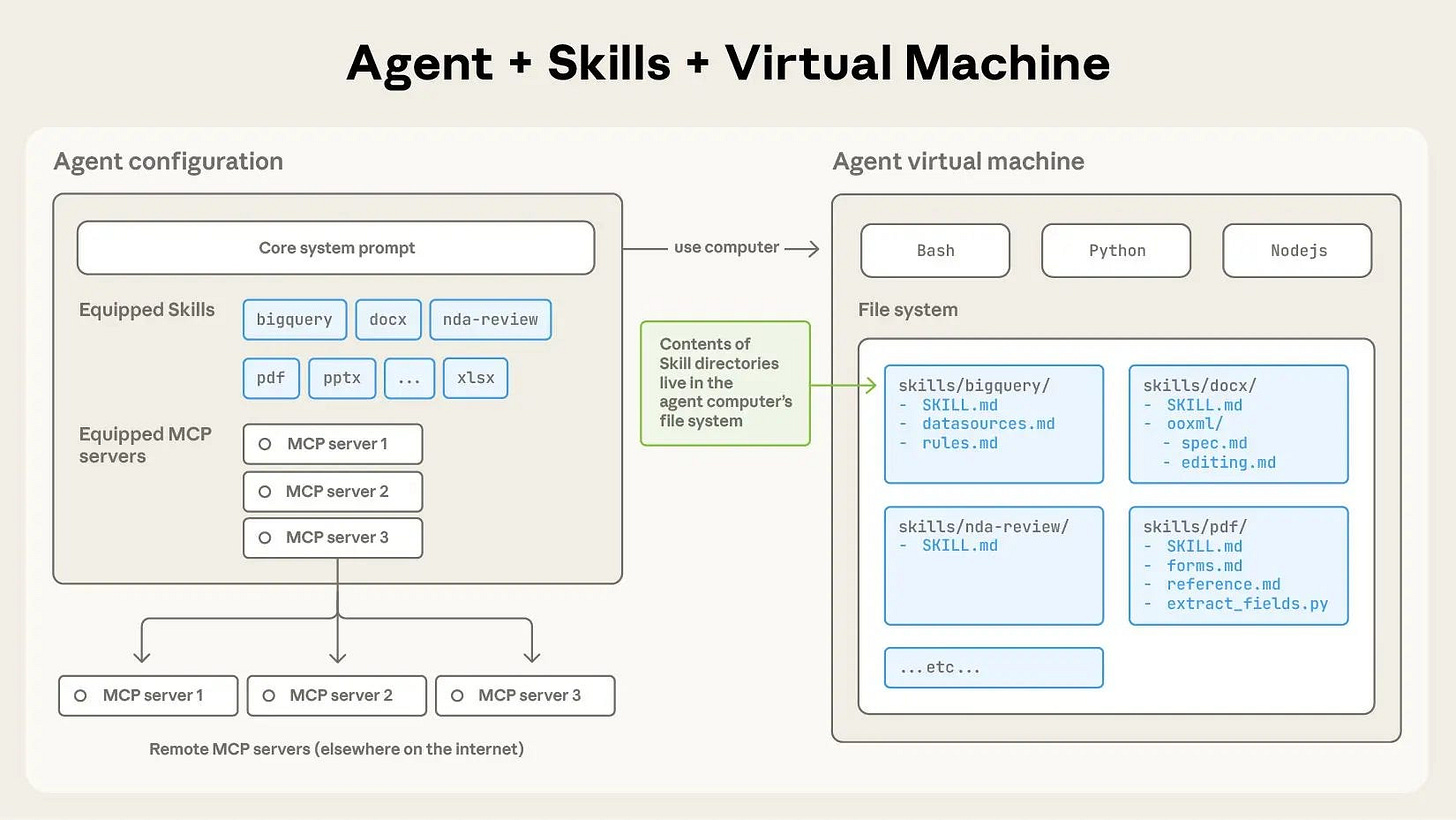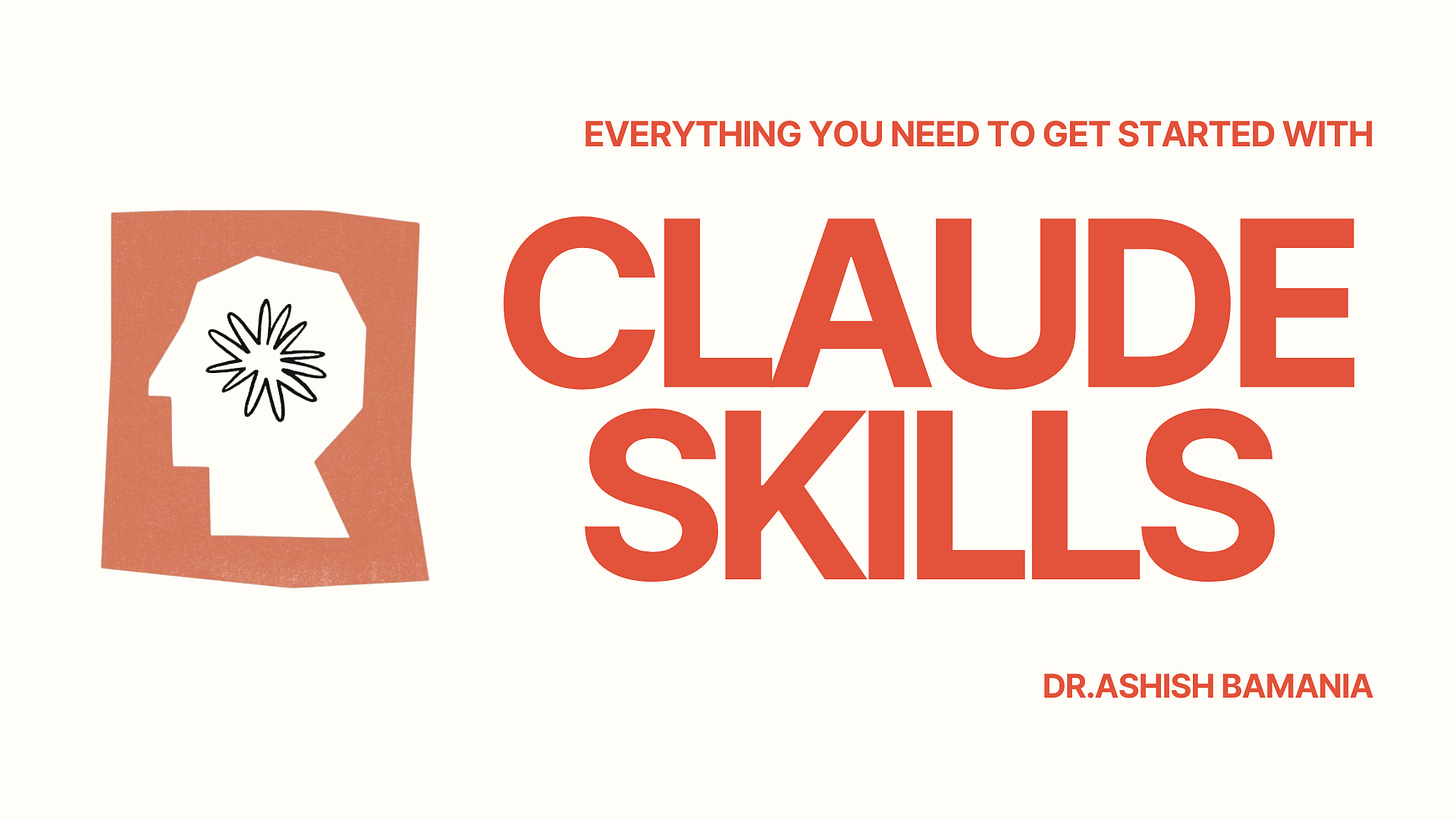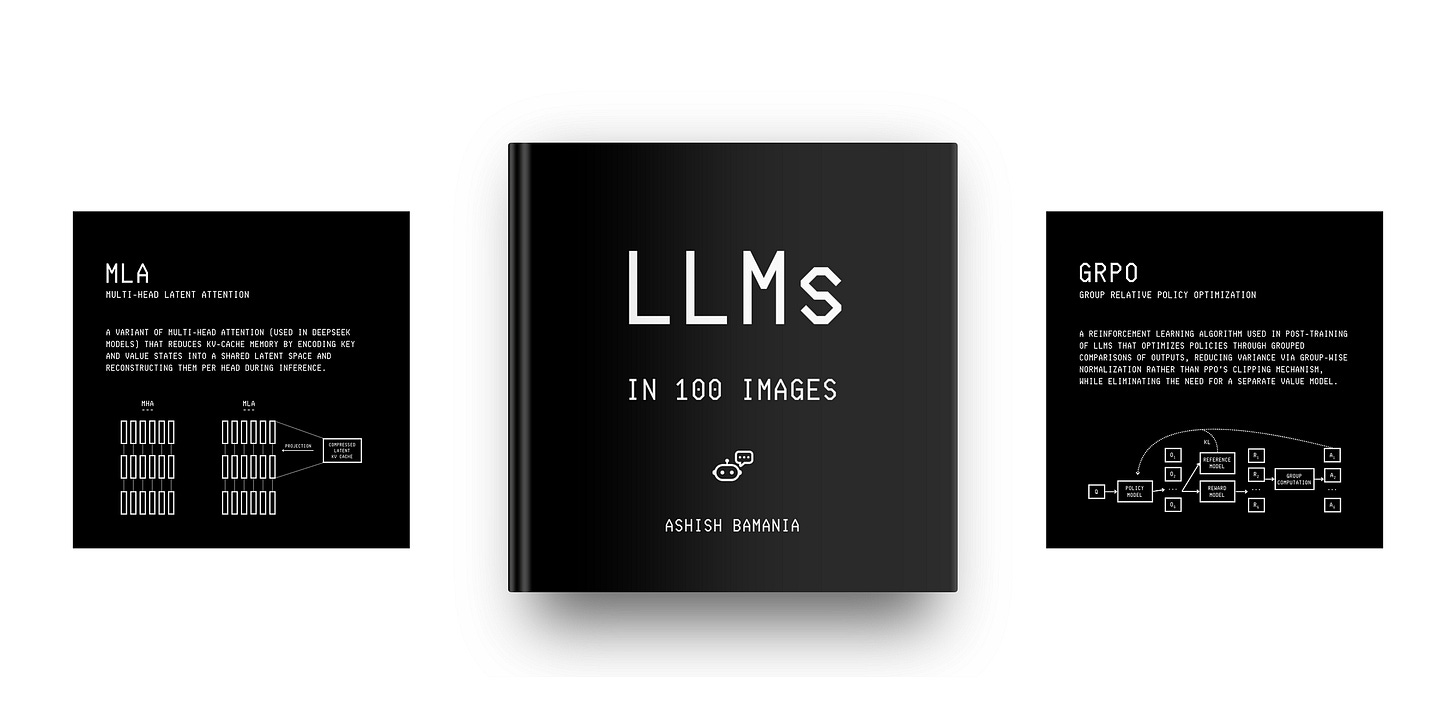Claude Skills: Everything That You Need To Get Started
A lesson on Anthropic’s Claude Skills, why it matters, and how to use it. (7 minutes read)
Anthropic recently announced Skills for Claude.
This has gained a lot of attention on the internet, just like Anthropic’s last release of the Model Context Protocol in November 2024.
Simon Willison, the co-creator of the Django Web framework, recently wrote that Claude Skills may be a bigger deal than MCP. However, when I first read about Skills, it appeared to me like a glorified prompting approach.
But is this true?
Let’s learn everything that you need to know to get started with Skills in this lesson, and answer this question.
Before we start, I want to introduce you to my new book called ‘LLMs In 100 Images’.
It is a collection of 100 easy-to-follow visuals that describe the most important concepts you need to master LLMs today.
Grab your copy today at a special early bird discount using this link.
What Is ‘Skills’?
Skills are simply folders/ directories that include instructions, scripts, and resources that Claude can discover and load on a task-specific basis.
Each Skill teaches Claude instructions to achieve a task better.
This could range from guidance on working with various file types (such as PDFs, CSV files, and others) to adhering to an organization’s brand guidelines. The possibilities are endless.
Skills transform general-purpose agents into specialized agents that fit one’s needs. — Anthropic
Anthropic previously used Skills to implement Claude’s document creation and editing functionality internally. However, they are now available for everyone to use and customize.
A High-Level Overview Of How ‘Skills’ Work
Let’s say that we give Claude a task to work on. Say it involves creating a PowerPoint presentation that highlights the trends in the use of AI across various industries.
What Claude does is automatically scan all available Skills to find the best suited for this task.
When it identifies the relevant Skills, it loads the instructions required to learn how to become an expert at solving this task. This is done in a token-efficient manner, the hows of which we will discuss soon.
Some qualities that make Skills amazing are:
They are like dynamic prompts that can be reused according to a task’s requirements. For example, if you prefer a specific format or reporting style, a Skill will help you achieve that each time without lengthy manual prompting.
They can be stacked together, and Claude can automatically coordinate their use.
They have the same format everywhere. Once built, a Skill can be used across Claude apps, Claude Code, and the API.
Skills can also have pre-written code (instead of just text instructions) that runs directly when Claude needs it to complete a task. This works best for math calculations, data processing tasks, API calls, and file operations.
A Peek Into The Internals Of A ‘Skill’
A Skill is a directory that contains a SKILL.md file. This directory is initialized in the LLM agent’s (Claude) virtual machine’s file system.

Each SKILL.md file has a YAML frontmatter with two fields:
name: The name of the Skilldescription: A short description of the Skill
This is the metadata that Claude preloads into its system prompt, so it knows all the Skills available for use. This provides Claude with enough information on each Skill to determine whether it should be used for a task without loading all the content into its context.



